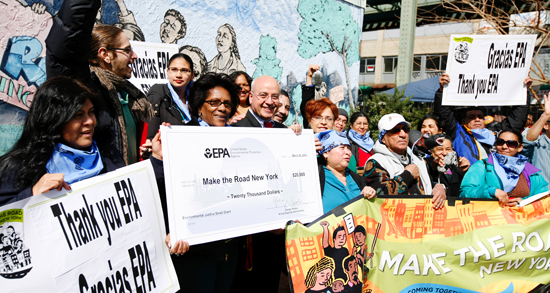Latest benchmark on environmental justice
This post contributed by Nadine Lymn, ESA Director of Public Affairs
Among its many responsibilities, the U.S. Environmental Protection Agency (EPA) is charged with implementing Plan EJ, issued by Executive Order twenty years ago by then-President Clinton to advance environmental justice through federal actions. According to EPA’s website, Plan EJ 2014 aims to “protect health in communities over-burdened by pollution; empower communities to take action to improve their health and environment; [and] establish partnerships with local, state, tribal and federal organizations to achieve health and sustainable communities.”
As reported in today’s Greenwire, a recent Government Accountability Office (GAO) report that looks at EPA’s progress in implementing EJ 2014 gives a mixed review. On the one hand, GAO gives the agency good marks for reaching out to private stakeholders through the National Environmental Justice Advisory Council. GAO also lauds EPA for reviving the Interagency Working Group on Environmental Justice after it had languished for 10 years.
“EPA has generally defined a mission and goals for its environmental justice efforts, ensured leadership involvement and accountability for these efforts, and coordinated with other federal agencies––all consistent with leading practices in federal strategic planning,” said GAO in its report.
On the other hand, the report says that EPA needs to do a better job evaluating the resources required to implement environmental justice considerations within the agency, among other critiques:
“However, EPA has not yet fully (1) established a clear strategy for how it will define key environmental justice terms or identified the resources it may need to carry out its environmental justice implementation plans, (2) articulated clearly states’ roles in ongoing planning and environmental justice integration efforts, or (3) developed performance measures for eight of its nine implementation plans to track agency progress on its environmental justice goals.”
One of the Ecological Society of America’s many thematic Sections is devoted to the issue of Environmental Justice and encourages ecologists to address EJ issues through education, research and outreach.
Robert Bullard, described in the Greenwire article as the “father of the environmental justice movement” said in the article that the GAO report and others like it provide “….benchmarks to determine where we are or what we have and have not accomplished.”
Photo credit: Claudio Papapietro, Make the Road New York
